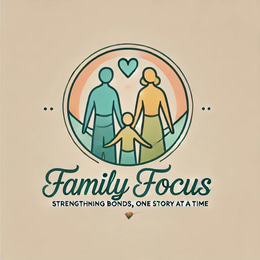How to Build Better Communication in Your Family
Strong communication is the foundation of a happy, healthy family. It fosters trust, understanding, and connection, making it easier to navigate challenges together. Whether you’re looking to resolve conflicts, strengthen bonds, or simply improve day-to-day interactions, these actionable tips can help you build better communication in your family.


1. Prioritize Active Listening
Listening is the cornerstone of effective communication. Show your family members that you genuinely care about what they’re saying by:
Giving Full Attention: Put away distractions like phones or TV during conversations.
Using Non-Verbal Cues: Nod, maintain eye contact, and show an open body posture.
Paraphrasing: Repeat back what you heard, such as, “So, you’re feeling upset because...”
Active listening helps everyone feel heard and valued.
2. Create a Safe Space for Sharing
Encourage openness by making your family feel safe to express themselves. Ways to do this include:
Avoiding judgment or criticism during conversations.
Ensuring that everyone’s opinions are respected, even if you disagree.
Letting family members speak without interruptions.
A safe space fosters honesty and deeper connection.
3. Establish Family Meetings
Regular family meetings provide an opportunity to discuss important topics and check in with one another. Use them to:
Resolve conflicts or misunderstandings.
Plan events, schedules, or routines together.
Celebrate successes and express gratitude.
Make these meetings consistent (e.g., weekly or bi-weekly) and keep them relaxed to encourage participation.
4. Use "I" Statements
When discussing feelings or conflicts, avoid placing blame. Instead, use “I” statements to express yourself. For example:
Instead of: “You never listen to me,” try: “I feel unheard when you’re on your phone while I’m talking.”
This approach minimizes defensiveness and keeps the focus on the issue rather than the person.
5. Practice Empathy
Put yourself in your family member’s shoes to better understand their perspective. Ask questions like:
“How are you feeling about this?”
“What can I do to support you?”
Empathy strengthens bonds by showing that you care about their emotions and experiences.
6. Set Boundaries Around Communication
Healthy communication requires clear boundaries. Some examples include:
Agreeing on “no phones” during family meals.
Respecting privacy and alone time when needed.
Avoiding yelling or name-calling during disagreements.
Boundaries ensure that communication remains respectful and productive.
7. Encourage Positive Reinforcement
Acknowledge and appreciate efforts to communicate well. Examples include:
Praising your child for sharing their feelings: “I’m so proud of you for telling me how you feel.”
Thanking a partner for listening attentively: “Thanks for hearing me out earlier.”
Positive reinforcement motivates continued effort in communication.
8. Make Time for One-on-One Conversations
In addition to group discussions, carve out time for individual conversations. This helps:
Strengthen personal bonds.
Address unique concerns or feelings that may not come up in group settings.
Show that each family member’s voice matters.
9. Model Healthy Communication
Children learn by watching their parents. Demonstrate effective communication by:
Resolving conflicts calmly and respectfully.
Apologizing when you’re wrong.
Speaking kindly and with consideration.
Your actions will set the tone for the rest of the family.
10. Have Fun Together
Laughter and play can break down barriers and improve communication naturally. Activities like board games, family outings, or even casual chats during walks can:
Create a relaxed environment.
Encourage open and joyful conversations.
Final Thoughts
Building better communication in your family takes time and effort, but the rewards are well worth it. By listening actively, creating a safe space, and fostering empathy, you can strengthen your relationships and navigate challenges more effectively. Remember, small daily actions can lead to big improvements over time.
What strategies have worked for your family? Share your tips in the comments below!
